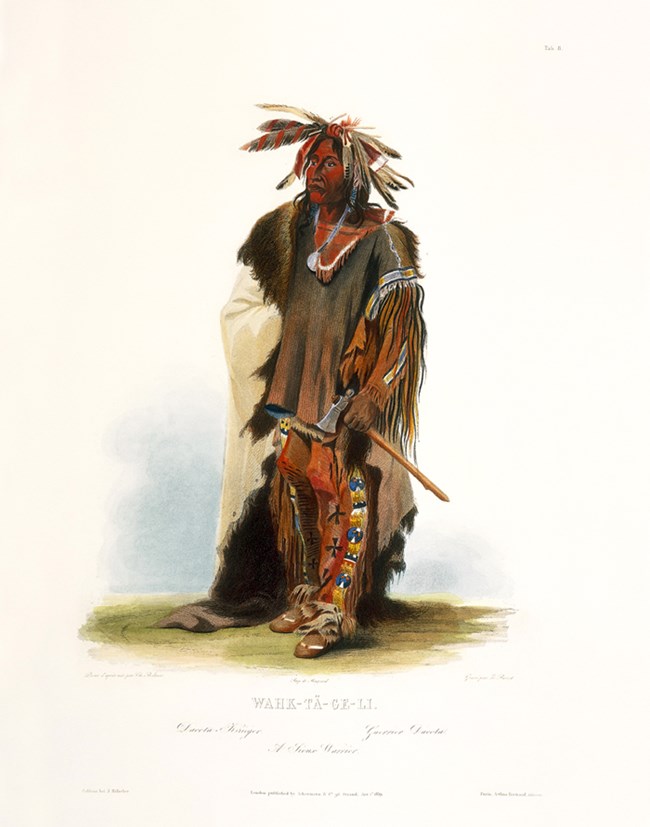Last updated: May 19, 2020
Article
Chief Black Buffalo

Photo: A Sioux warrior, as painted by Karl Bodmer in about 1833.
In the Brulé bands three men were in charge: Black Buffalo, Buffalo Medicine, and Tortohongar (known by whites as “the Partisan”). But it was Black Buffalo, often referred to as Black Bull Buffalo or Untongarabar, whom the Captains encountered most often.
In September 1804, he was given a medal by the Captains and invited aboard the keelboat with the Partisan, known to be more troublesome. Given whiskey, the chiefs feigned drunkenness and began quarrelling. Later, Black Buffalo would be the one who ordered the young warriors to release their hold on the keelboat’s rope.
In August 1806, from across the river, Black Buffalo invited Captain Clark to cross over and meet with him. Clark refused and Black Buffalo expressed his anger by returning to the top of a hill and mightily striking the ground three times with his gun. Clark knew this was a severe sign of frustration.
Black Buffalo was the leader of the largest Brulé band, and was described in James P. Ronda’s book, “Lewis and Clark Among the Indians,” as a man “of good character, although angry and fierce in his fits of passion.” It’s known that Black Buffalo and the Partisan, the chief of the second largest band, were frequently in conflict, often trying to outwit each other.
Black Buffalo remained a powerful force in Brulé politics and for Missouri River trade until his death in July 1813.
